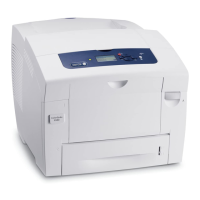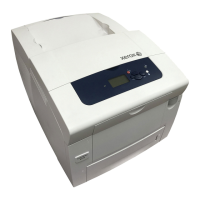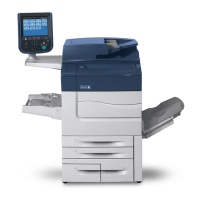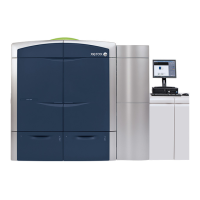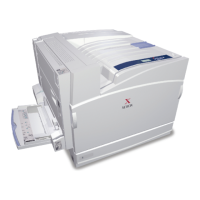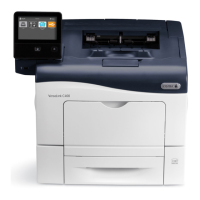Security Features
ColorQube 8570/8870 Color Printer
System Administrator Guide
65
IPsec
Internet Protocol Security (IPsec) is a group of protocols used to secure Internet Protocol (IP)
communications by authenticating and encrypting each IP data packet. It allows you to control IP
communication by creating protocol groups, policies, and actions. Secure HTTP (SSL) must be enabled
with an installed digital certificate before you can enable IPsec.
To enable IPsec:
1. Launch a Web browser from your computer.
2. Enter your printer IP address in the browser Address field. For details, see Finding the Printer IP
Address on page 17.
3. On the left navigation pane, select the Security folder.
4. On the left navigation pane, select the IPsec folder.
5. If prompted, enter your Admin or Key User name and password.
6. On the left navigation pane, select Security Policies.
7. Next to IPsec, select On.
See also:
Managing Certificates on page 56
Configuring SSL on page 57
IPsec Policies
IPsec Policies are sets of rules that determine which IP packets are given IPsec protection, and how
network traffic is protected. This page enables you to build IPsec Policies based on a combination of
the available Host Groups, Protocol Groups, and Actions.
The order in which the IPsec Policies are added is not important. The printer creates the low-level
policies from the most specific to the most general. IPsec uses the first applicable rule when deciding
the course of action. For example, if three policies are added in the following order:
1. ESP transport for the local subnet
2. Deny all
3. Bypass for a specific IP within the local subnet
The printer organizes the policies in the following order:
1. Bypass for a specific IP in local subnet
2. ESP transport for local subnet
3. Deny all
Note: Changing IPsec Policies might cause the printer to lose connection with the network. For
information on how to re-establish connectivity, see Disabling IPsec at the Control Panel on
page 66.

